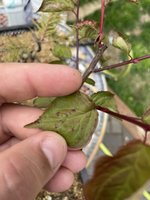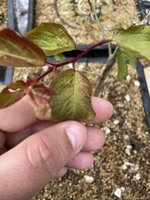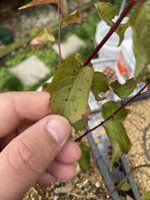Sorry to be slow in getting back to you. Work has been onerous the last few weeks and I’ve been way from the site for a few days. I would avoid Malathion because it kills micorhyzae, and is also harmful to pollinators. There are numerous organic anti-fungals available.
My apricot developed shothole yet again three weeks ago. I cut off all the affected leaves, applied a systemic, and sprayed the entire tree. I was reminded that the biggest contributor is getting the leaves wet when watering—the spores over-winter in the bud/trunk crotch and get activated when doing indiscriminate foliar watering. Since most of my collection is azaleas, I was doing a lot of afternoon foliar watering to cool things down, and that was great for everything except the apricot and the flowering almond.
When you treat the tree, it’s also a good idea to treat the soil. I like to take OTC Walgreens 3% hydrogen peroxide, dilute it by half, and dunk the potted tree [above the soil line] for thirty seconds.



